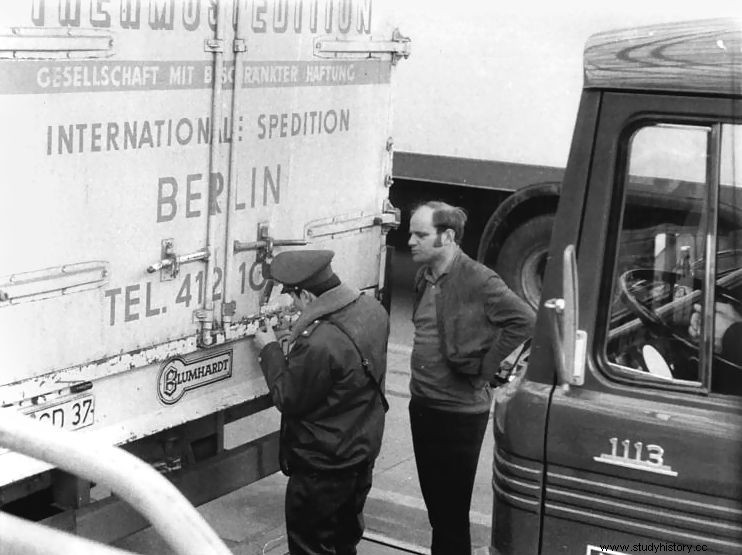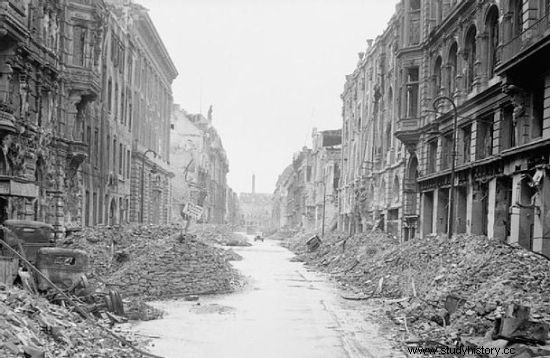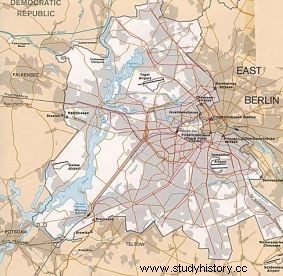Breaking into it was the dream of every inhabitant of the GDR. Throughout the Eastern Bloc, people imagined extraordinary prosperity and wealth waiting just behind the watchtowers and (later) the concrete wall. In reality, however, West Berlin was not a dream city at all. More like nightmares.
What was the real situation in Allied-controlled West Berlin after the end of its famous blockade? Extremely uninteresting. As long as the city was a political issue in the superpower dispute, everyone was interested in it.
But when the Soviets finally folded, it turned out that West Berlin was actually a meaningless and worthless island in the middle of the communist sea. Getting to it required covering 140 kilometers of hostile territory and going through two border controls, which were inevitably accompanied by harassment and dangers.

Meticulous checks? It is inevitable when leaving Germany for West Berlin. And that's twice! Passageway in Potsdam in 1972 (photo Bundesarchiv, Bild 183-L0331-0009 / Reiche, Hartmut / CC-BY-SA 3.0).
From the very beginning, the former capital of the state was a ruined, devastated city that remembered the Allied carpet raids perfectly. Immediately after the war, the occupiers further oppressed them, dismantling them and taking whatever they could to them (the French were the leaders in this).
Even after a few years, the streets were still 75 million cubic meters of rubble and the newly established Federal Republic of Germany wanted nothing to do with West Berlin. Contrary to popular belief, half of the city was not incorporated into West Germany - it was still a strange, occupied enclave.

In the first years after the war, Berlin looked rather uninteresting…
Big business was the first to understand the seriousness of the situation. All major corporations took their feet under the belt, seeing that under these conditions they would not be able to do business. 150 large plants were evacuated from West Berlin shortly after the war industrial plants belonging to companies such as AEG, Deutsche Kabelwerke, Wintershall AG, Knorr-Bremse, Salzdetfurth AG, Graetz AG and Siemens.

West Berlin map
In 1949, production in West Berlin was five times smaller than before the war . Some sectors of the economy have faced an even greater decline:machine production, for example, has decreased tenfold. More plants went bankrupt because the German authorities consistently did not want to transfer any orders to the former capital.
As Wilfried Rott, author of the book “Wyspa. The history of West Berlin 1948-1990 ”, no excuse seemed too cheap to the postal and telecommunications administration (…). And this was an obstacle due to security and deadlines, and this was again lacking "time and some clerk" (p. 51) . The personal pleas of the mayor of the city did not help, nor even the pleading appeals to the citizens of West Germany. Even artists, not to mention politicians and businessmen, did not want to come to West Berlin.
We didn't have to wait long for the effects. According to Rott, in the summer of 1949 the economic situation in West Berlin was described as: nightmare, bankruptcy and catastrophe . There were signs of overwhelming poverty everywhere.
The number of unemployed has soared. From 50,000 in 1948 to 150,000 in April 1949, and finally 287,000 in December! Every fourth inhabitant of West Berlin was unemployed . In Poland, even in the worst years of the last decade, we did not experience such a situation!
There were kilometer-long queues to labor offices, where no work was offered. At the same time, thousands of East Germans illegally forced their way to West Berlin, hoping that they would find prosperity and a better life here. Well, they couldn't have been more wrong…
Source:
- Wilfired Rott, Island. The history of West Berlin 1948-1990 , Polish Scientific Publishers PWN, 2011.
